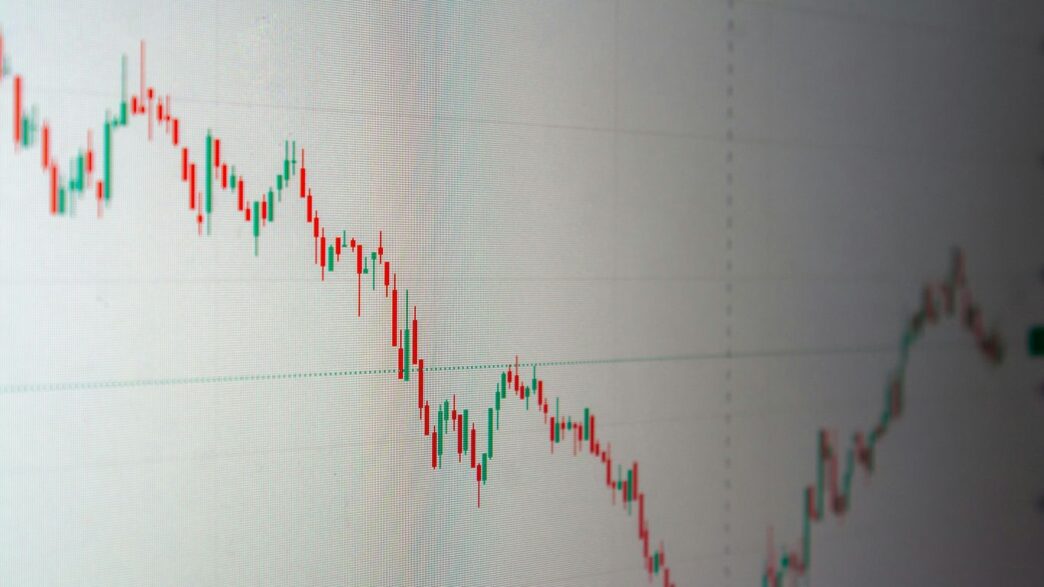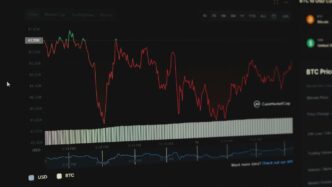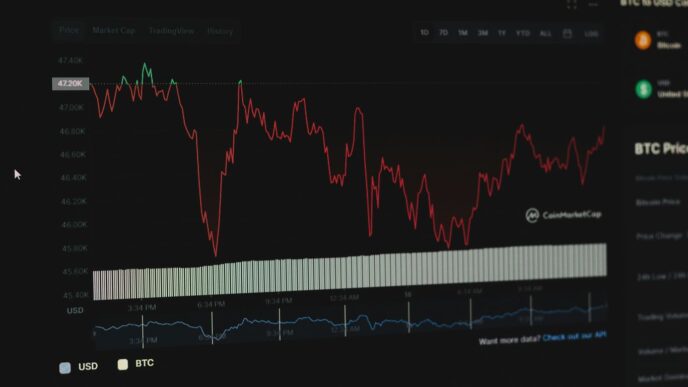The crypto market has been pretty wild lately, and a lot of people are asking, “why is crypto crashing today?” It feels like just yesterday things were looking up, but then BAM! Prices took a nosedive. We saw major coins like Bitcoin and Ethereum drop hard, and smaller coins got hit even worse. It’s a lot to take in, especially if you’re new to this space. Let’s break down what’s really going on and why these big swings happen.
Key Takeaways
- A major crypto sell-off, triggered by geopolitical news about tariffs, caused billions in liquidations, with many asking why is crypto crashing today.
- While headlines reported $19 billion in liquidations, actual trader losses were likely much smaller, between 5% and 15% of that figure.
- The crash exposed how fragile liquidity can be during extreme volatility, as market makers sometimes pull back, worsening price drops.
- Highly leveraged positions were wiped out, showing the significant risks involved when traders borrow to amplify their bets.
- The market showed resilience, bouncing back somewhat after initial panic, but the event serves as a reminder to manage risk carefully in this volatile asset class.
Understanding The Latest Crypto Market Turmoil
A Sudden Plunge: The Numbers Behind The Crypto Sell-off
So, what exactly happened this past week in the crypto markets? It felt like waking up to a digital financial storm. Bitcoin, our big guy, took a pretty hard hit, dropping below its 200-day moving average. That’s usually a sign things aren’t looking too great technically. And it wasn’t just Bitcoin; the whole market turned red, fast. We saw major sell-offs, and even those U.S. Bitcoin ETFs that have been so popular? They experienced some pretty big outflows. This all happened while the U.S. 10-year Treasury yield was also dropping, which usually makes investors a bit nervous about riskier assets, and crypto definitely fits that bill.
Here’s a quick look at some of the numbers:
- Bitcoin (BTC): Dropped below the 200-day Simple Moving Average (SMA).
- Altcoins: As a group, they lost over 12% of their value.
- Liquidations: Over $1 billion in crypto positions were forcibly closed within a single 24-hour period.
- Specific Altcoins: Some, like TAO, ASTER, and LDO, saw losses of more than 10%.
- Ethereum (ETH): Accounted for about $115 million in liquidations, with Bitcoin following at $80 million.
Fear Breeds Panic: The Sentiment Crisis Gripping The Market
When prices start dropping like that, you can practically feel the mood change. People go from feeling pretty optimistic to downright scared, and fast. Reports show that market sentiment quickly shifted into what’s called "extreme fear." This kind of widespread panic can really make things worse. When everyone’s worried and starts selling, it pushes prices down even further, creating a cycle that’s hard to break out of. It’s like a snowball rolling downhill, picking up more snow and getting bigger and faster.
The Great De-Leveraging: Friday Flash Crash
Friday was a particularly wild day, often called a "flash crash." It all seemed to kick off after some big news about potential new tariffs on Chinese imports. This news hit the traditional markets, but because crypto trades 24/7, it became the immediate place where all that anxiety played out. What happened was a massive amount of money tied up in leveraged trades – basically, bets made with borrowed money – got wiped out. We’re talking billions of dollars in futures positions being liquidated in a very short time. While the headlines talked about $19 billion in liquidations, it’s important to remember that this figure represents the total value of trades that were automatically closed, not necessarily the actual money lost by traders, which was likely a smaller percentage. Still, it shows how much borrowed money was in the system and how quickly it can disappear when things go south. It was a stark reminder of how sensitive crypto can be to big global economic news and the risks that come with using a lot of borrowed funds.
Why Is Crypto Crashing Today? Unpacking The Triggers
Okay, so what actually set off this whole crypto nosedive? It wasn’t just one thing, really. It was more like a perfect storm of bad news hitting all at once.
Geopolitical Tensions Fuel Market Anxiety
Things started getting shaky when tensions flared up between the US and China. Remember those headlines about China tightening export restrictions on rare earth elements? That got people worried about supply chains and just generally made the global economic outlook look a bit grim. When big countries start flexing their muscles, the markets tend to get nervous, and crypto, being a global, 24/7 market, feels that anxiety pretty quickly.
Tariff Announcements Spark Global Market Sell-off
Then, things really took a turn. President Trump made an announcement about imposing a 100% tariff on all Chinese imports, set to kick in November 1st. This news hit like a ton of bricks, not just for crypto but for traditional markets too. Because crypto markets never sleep, they became the immediate place where all this fear and uncertainty played out. It was like the crypto market was the canary in the coal mine for the broader economic fallout.
Macroeconomic Uncertainty Amplifies Volatility
On top of the geopolitical drama, there’s just a general sense of unease about the economy right now. Inflation numbers, interest rate whispers, you name it – it all adds up. When the big picture looks fuzzy, investors tend to pull back from riskier assets, and crypto is definitely in that category for a lot of people. This uncertainty just poured gasoline on the fire started by the tariff news, making the price swings even wilder.
The Mechanics Of Crypto Volatility Exposed
Okay, so why does crypto go wild so often? It’s not just random noise; there are some real mechanics at play that make these markets move faster and harder than, say, the stock market. It’s a bit of a wild west out there, and understanding how it works can help you avoid getting caught in the crossfire.
Liquidation Spiral And Leverage Wipeout
This is a big one. Imagine you borrow money to buy crypto, hoping the price goes up so you can pay back the loan and keep the profit. That’s leverage. In crypto, people often use a lot of it. When the price starts to drop, even a little, it can quickly eat into your initial investment. If the price drops enough, your broker or exchange will force you to sell your crypto to cover the loan. This is called a liquidation.
Now, here’s where it gets nasty. When lots of people get liquidated at once, it forces a massive amount of selling into the market. This extra selling pressure makes the price drop even faster, which then liquidates more people. It’s a snowball effect, a "liquidation spiral," and it can wipe out huge amounts of money in a very short time. We saw this happen in October 2025, where billions in positions were closed out almost instantly.
Market Makers: Stabilizers Or Catalysts?
Market makers are supposed to be the steady hands in the market. Their job is to always be ready to buy or sell, making it easier for everyone else to trade and keeping prices from jumping around too much. They do this by setting buy and sell prices (the "bid-ask spread"). In normal times, they help keep things smooth.
But during a crisis? It’s different. When prices start crashing, market makers can get spooked too. They might pull their buy orders to avoid losing money, or they might widen their spreads so much that it becomes too expensive for regular traders to buy. In October 2025, some market makers actually pulled their liquidity – basically, they stopped offering to buy or sell – very quickly after bad news hit. This created a "liquidity vacuum," making it even harder to trade and worsening the price drop. So, instead of stabilizing, they sometimes make things worse.
Inadequate Risk Models In Extreme Conditions
Financial folks use fancy computer models to guess how much risk they’re taking. Things like "Value-at-Risk" (VaR) are common. These models look at past price movements to predict future ones. The problem is, crypto is just so much more unpredictable than traditional markets.
- Historical Simulation VaR: This model, which looks at past price changes, actually did a bit better than others during the October 2025 crash. Still, it wasn’t perfect.
- Delta Normal and Monte Carlo: These models struggled a lot because crypto prices can move in ways that aren’t "normal" or easily predictable.
- Daily Dynamic Tuning: Some newer ideas involve constantly adjusting the model’s settings in real-time. This shows promise for adapting to crypto’s wild swings, but it’s not widely used yet.
Basically, the tools used to manage risk in traditional finance often fall short when faced with the extreme, fast-paced swings seen in the crypto world. They’re built for a different kind of beast.
Market Impact And Price Action Analysis

So, what does all this market chaos actually look like on the charts? It’s been a rough ride, no doubt about it. We’ve seen some pretty significant drops across the board, and it’s not just the usual suspects taking a hit.
Bitcoin and Ethereum’s Sharp Declines
Bitcoin (BTC) and Ethereum (ETH), the two giants of the crypto world, have felt the pinch. Bitcoin, which many look to as the market’s barometer, has seen its price tumble. We’re talking about a noticeable drop from recent highs, pushing it below some key technical levels that traders watch closely. Ethereum hasn’t fared much better, also experiencing a sharp correction. This isn’t just a small dip; it’s a significant move that has shaken confidence.
Altcoins Experience Brutal Corrections
If you thought BTC and ETH had it bad, spare a thought for the altcoins. These smaller, often more volatile digital assets have been hit even harder. Many altcoins have seen their values slashed by double-digit percentages in a very short period. It’s a brutal correction that highlights how quickly sentiment can shift and how much risk is involved when investing outside the top two.
Total Market Capitalization Sheds Billions
When you add it all up, the total value of the cryptocurrency market has taken a massive hit. Billions of dollars have been wiped out in a matter of days. This isn’t just a theoretical number; it represents real value disappearing from the market, a stark reminder of the volatility we’re dealing with. It’s a clear sign that the overall crypto ecosystem is under pressure.
Here’s a quick look at the numbers:
| Asset Class | Approximate % Change (Last 24h) | Approximate % Change (Last 7d) |
|---|---|---|
| Bitcoin (BTC) | -8% | -15% |
| Ethereum (ETH) | -10% | -18% |
| Major Altcoins | -12% to -20% | -20% to -30% |
| Total Market Cap | -9% | -16% |
This kind of price action is what makes crypto investing so challenging. It’s a market that can move incredibly fast, both up and down. For many, especially those newer to the space, seeing these kinds of drops can be pretty unnerving. It really underscores the importance of having a plan and not getting caught up in the emotional swings of the market.
Wider Significance: Reshaping The Digital Asset Landscape

This ongoing crypto rollercoaster isn’t just about numbers going up and down; it’s actually changing how the whole digital asset world works. Think of it like this: every big price swing forces everyone to rethink things, from how new rules get made to what actually counts as a solid investment.
Systemic Risk And The Path Forward
The big takeaway from all this wild trading is that crypto is getting more connected to the rest of the financial world. When big institutions start putting their money into things like Bitcoin and Ethereum ETFs, it means global events – like interest rate changes or political news – can hit crypto prices harder than before. It’s a bit like how a storm in one part of the ocean can cause waves everywhere else. This connection means we need to be way more aware of how these markets influence each other. The industry is learning that stability and innovation have to go hand-in-hand, and finding that balance is key to avoiding bigger problems down the road.
The Role Of Regulatory Interventions
All this volatility is basically pushing governments and financial watchdogs to finally lay down some clearer rules. We’re seeing some countries try to create environments that encourage new tech while still keeping things safe. But then, you have situations where approvals for things like new ETFs get delayed because of political stuff, showing just how tricky it is to get things moving. Countries that figure out how to make clear, sensible rules are likely to attract more businesses and money, while others might get left behind. It’s a bit of a race to see who can create the best playground for digital assets.
Market Reset And Sustainable Growth
History shows us that these big market shake-ups tend to clear out the weaker players, leaving the stronger ones to grow. It’s kind of like the dot-com boom and bust – lots of companies disappeared, but the ones with real value stuck around and built the internet we use today. The crypto market has gone through similar cycles, often called "winters," where only the most solid projects survive and mature. This current period of intense price swings is doing the same thing: it’s testing projects, weeding out those that are just hype, and highlighting those with actual use cases and solid foundations. The goal is to move past just speculation towards a market built on real utility and long-term value.
Navigating The Volatile Crypto Environment
Okay, so things have been pretty wild in the crypto world lately, right? It feels like a rollercoaster, and honestly, it can be a bit much, especially if you’re not used to it. This whole market swings hard, and it’s easy to get caught up in the panic or the hype. But there are ways to handle it without losing your shirt.
The Dangers Of Excessive Leverage
First off, let’s talk about leverage. It sounds cool, like you can make more money with less of your own cash. But here’s the deal: it’s a double-edged sword, and in crypto, that edge is extra sharp. When the market drops, and it drops hard sometimes, those leveraged positions get wiped out super fast. It’s like borrowing money to bet on a horse, and then the horse trips right out of the gate. You don’t just lose your bet; you owe the bookie money too.
- Amplified Losses: Leverage magnifies both gains and losses. A small price move against your position can lead to a total loss of your initial investment, and sometimes even more.
- Liquidation Cascades: When prices fall, leveraged traders get margin calls. If they can’t meet them, their positions are automatically sold off (liquidated). This selling pressure can push prices down further, triggering more liquidations. It’s a nasty cycle.
- Emotional Toll: The stress of managing highly leveraged positions during a downturn is immense. It often leads to making rash decisions driven by fear.
Basically, if you’re new to this or don’t have a solid understanding of risk management, staying away from high leverage is probably the smartest move. Stick to what you can afford to lose.
Retail Investor Vulnerabilities
Now, what about us regular folks, the retail investors? We’re often the ones who get hit the hardest when things go south. It’s not because we’re bad at investing, but because we’re often up against bigger players and sometimes, our own emotions.
- FOMO and Panic Selling: We see prices soaring, and we jump in, afraid of missing out (FOMO). Then, when prices crash, we panic and sell everything, locking in losses. It’s the classic "buy high, sell low" trap.
- Information Asymmetry: Big institutions and whales often have access to information or trading tools that we don’t. They can move markets, and we’re often just reacting to what they’ve done.
- Lack of Diversification: Sometimes, people put all their eggs in one crypto basket. When that basket drops, everything is gone. Spreading your investments around, even within crypto, can help cushion the blow.
It’s really important to have a plan. Know why you’re investing, what your goals are, and when you’ll sell, whether that’s to take profits or cut losses. Sticking to that plan, even when your gut is screaming at you, is key.
Key Metrics To Watch For Recovery
So, how do you know when things might be turning around? It’s not an exact science, but there are some signs you can keep an eye on. Think of these as the dashboard lights for your crypto investments.
- Bitcoin Dominance: When Bitcoin’s share of the total crypto market cap starts to rise, it often signals that investors are moving back to the perceived safer asset within crypto. This can be an early sign of stability.
- Stablecoin Supply: An increasing supply of stablecoins (like USDT or USDC) can indicate that there’s more capital on the sidelines, ready to jump back into the market when opportunities arise.
- On-Chain Activity: Looking at data directly from the blockchain can be telling. Are more people holding onto their coins for the long term (HODLing)? Is transaction volume picking up? These can be positive signs.
- Macroeconomic News: Crypto doesn’t exist in a vacuum. Keep an eye on interest rate decisions, inflation reports, and geopolitical events. Positive news in the traditional economy often spills over into crypto.
Watching these metrics doesn’t guarantee you’ll time the market perfectly, but it gives you a better sense of the overall health and sentiment of the crypto ecosystem. It’s about being informed and making decisions based on data, not just gut feelings.
What’s Next for Crypto?
So, yeah, the crypto market took a pretty big hit recently. It felt like everything was going down all at once, and honestly, it was a bit scary to watch. We saw a lot of money get wiped out, especially for folks using leverage, which is basically betting with borrowed money – a super risky game in crypto. But here’s the thing: while the headlines screamed about billions lost, the actual cash people lost was a smaller chunk of that. It’s a good reminder that crypto is still pretty wild and unpredictable. Things like new tariffs and global worries definitely spooked investors, pushing them away from riskier assets. Even though things bounced back a bit, it shows we’re still figuring things out. For now, it seems like playing it safe, not betting the farm, and having a long-term view is the way to go. Keep an eye on what governments are doing and if big companies are still buying in. It’s a bumpy ride, for sure, but the tech is still moving forward.
Frequently Asked Questions
Why did the crypto market suddenly drop?
The crypto market dropped because of big news, like the U.S. putting new taxes on goods from China. This made investors nervous about the economy, and they started selling off risky assets, including cryptocurrencies. Also, a lot of traders who borrowed money to bet on prices going up were forced to sell when prices fell, causing prices to drop even faster.
What is a ‘flash crash’ in crypto?
A ‘flash crash’ is when crypto prices suddenly and dramatically fall in a very short amount of time, like minutes or hours. This can happen when a lot of people are forced to sell their crypto quickly because they borrowed money and the price dropped too much. It’s like a snowball effect, where one big sell-off causes others to happen, making prices crash even harder.
How much money was lost in the recent crypto crash?
While news reports mentioned billions of dollars in ‘liquidations,’ which is the value of trades that were automatically closed, the actual money lost by traders was much less. It’s estimated that only about 5% to 15% of that huge liquidation number was actual lost money. So, while it sounds scary, the real financial hit to traders was smaller than the headlines suggested.
Are Bitcoin and Ethereum affected by these crashes?
Yes, Bitcoin and Ethereum are usually affected when the crypto market crashes. They are the biggest and most well-known cryptocurrencies, so when there’s a big sell-off, their prices tend to drop significantly. However, they often recover faster than smaller cryptocurrencies, which can experience much bigger drops.
What does ‘leverage’ mean in crypto trading?
Leverage in crypto trading means borrowing money to make bigger bets. For example, with 10x leverage, you can trade with 10 times the amount of money you actually have. While this can lead to bigger profits if you’re right, it also means you can lose money much faster if the price moves against you. Too much leverage is very risky, especially in a volatile market.
What should investors do during a crypto crash?
During a crash, it’s important to stay calm and avoid making emotional decisions like panic selling. Investors should focus on their long-term plan, understand the risks of leverage, and perhaps watch key signs of recovery like stablecoin supply and how much leverage is being used. Diversifying investments and not putting all your money into one asset can also help manage risk.














